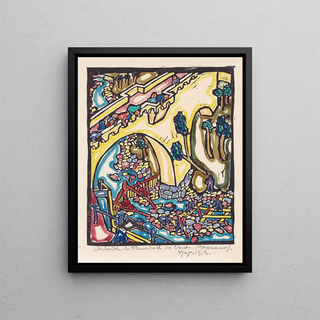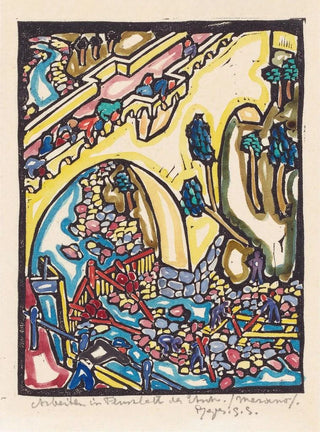Art print | Working in the Adige bed - Reijer Stolk


View from behind

Frame (optional)
At the heart of the artwork "Working in the bed of the Adige" by Reijer Stolk, unfolds a scene imbued with poetry and serenity. This depiction, evoking the peaceful banks of the Adige, invites the viewer to immerse themselves in a universe where nature and humanity coexist harmoniously. The artist, with undeniable mastery of light and color, manages to capture the very essence of the daily life of river workers. Through this art print, the viewer is transported to a suspended moment, a contemplative instant where time seems to stand still. Every detail, every gesture of the depicted characters resonates with touching authenticity, demonstrating exceptional artistic skill.
Style and uniqueness of the work
Reijer Stolk's style is distinguished by its realistic approach, but also by an impressionist sensitivity that gives his works a unique atmosphere. In "Working in the bed of the Adige," delicate nuances of the palette, ranging from deep greens to soothing blues, create a visual harmony that draws the eye and calms the mind. The subtly rendered play of light highlights the texture of natural elements, such as shimmering water and lush vegetation. The artist succeeds in establishing a dialogue between the characters and their environment, each figure being organically integrated into the landscape. This marriage between man and nature reflects meticulous observation and a deep understanding of the dynamics that govern our relationship with the world.
The artist and his influence
Reijer Stolk, an emblematic figure of 19th-century Dutch art, managed to establish himself through his innovative perspective on rural life and natural landscapes. Influenced by the great masters of painting, he developed a style that is uniquely his own, blending realism and impressionism. His work reflects an era when industrialization was beginning to alter the traditional landscape, and he became a witness to these transformations while celebrating the beauty of everyday scenes. Stolk was also a passionate advocate of

Matte finish

View from behind

Frame (optional)
At the heart of the artwork "Working in the bed of the Adige" by Reijer Stolk, unfolds a scene imbued with poetry and serenity. This depiction, evoking the peaceful banks of the Adige, invites the viewer to immerse themselves in a universe where nature and humanity coexist harmoniously. The artist, with undeniable mastery of light and color, manages to capture the very essence of the daily life of river workers. Through this art print, the viewer is transported to a suspended moment, a contemplative instant where time seems to stand still. Every detail, every gesture of the depicted characters resonates with touching authenticity, demonstrating exceptional artistic skill.
Style and uniqueness of the work
Reijer Stolk's style is distinguished by its realistic approach, but also by an impressionist sensitivity that gives his works a unique atmosphere. In "Working in the bed of the Adige," delicate nuances of the palette, ranging from deep greens to soothing blues, create a visual harmony that draws the eye and calms the mind. The subtly rendered play of light highlights the texture of natural elements, such as shimmering water and lush vegetation. The artist succeeds in establishing a dialogue between the characters and their environment, each figure being organically integrated into the landscape. This marriage between man and nature reflects meticulous observation and a deep understanding of the dynamics that govern our relationship with the world.
The artist and his influence
Reijer Stolk, an emblematic figure of 19th-century Dutch art, managed to establish himself through his innovative perspective on rural life and natural landscapes. Influenced by the great masters of painting, he developed a style that is uniquely his own, blending realism and impressionism. His work reflects an era when industrialization was beginning to alter the traditional landscape, and he became a witness to these transformations while celebrating the beauty of everyday scenes. Stolk was also a passionate advocate of






